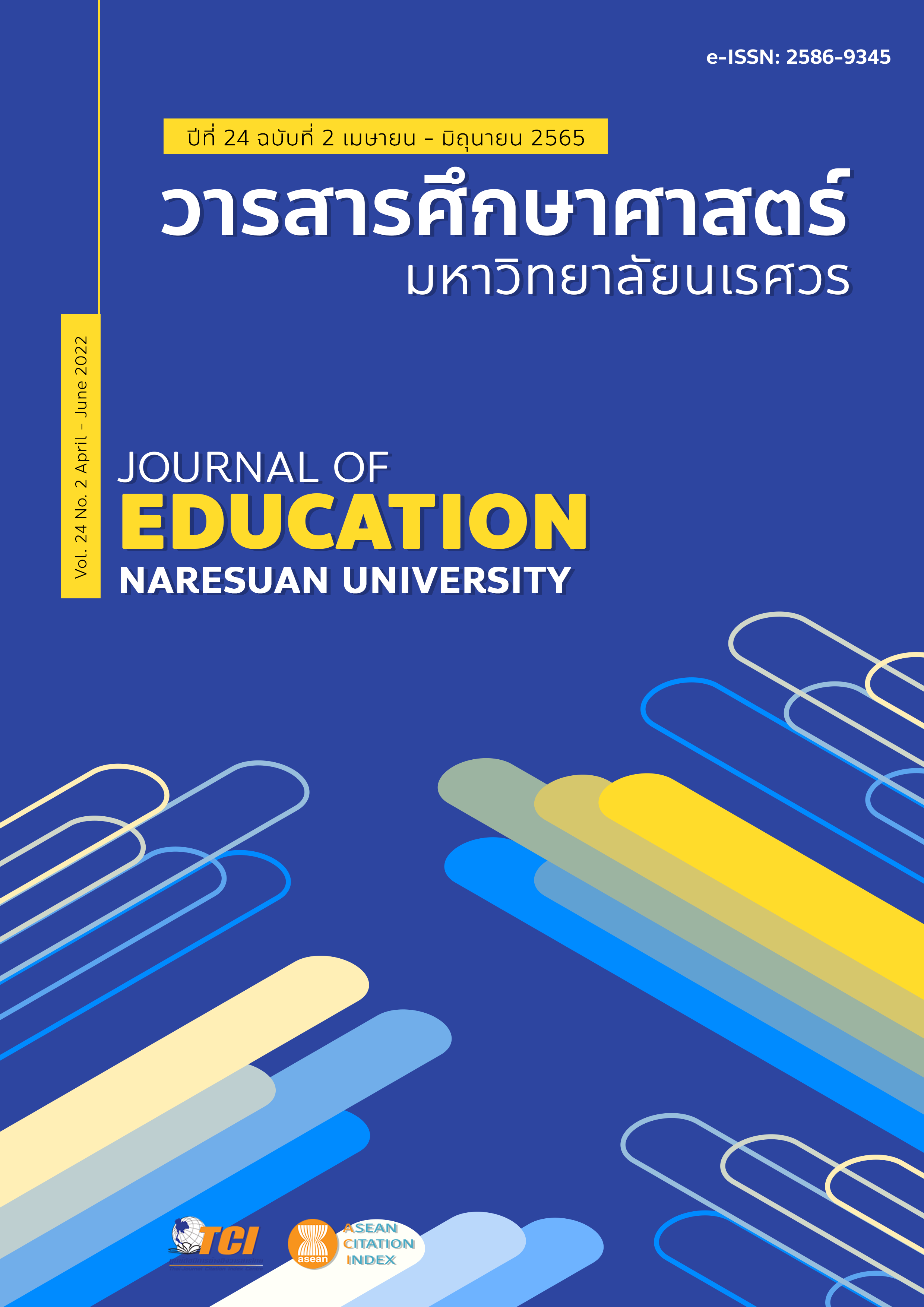COMPETENCIES OF SCIENCE TEACHERS FOR TEACHING DESIGN THINKING สมรรถนะการสอนการคิดเชิงออกแบบของครูวิทยาศาสตร์
Main Article Content
Abstract
Design Thinking is the competence needed to solve complex problems using creativity to generate new ideas in which to develop innovations that enhance the quality of life and well-being. Learning that promotes design thinking by using engineering design through STEM activities is one approach to encourage student’s design thinking. In addition, there are several design thinking processes that can be used to improve the design thinking of students. Teachers who have teaching competency relating teaching design thinking must have knowledge, skills, and positive attitude towards teaching design thinking. This review can be used as a guideline for teachers to promote design thinking in their classroom and for students to increase their design thinking competency.
Article Details

This work is licensed under a Creative Commons Attribution-NonCommercial-NoDerivatives 4.0 International License.
The owner of the article does not copy or violate any of its copyright. If any copyright infringement occurs or prosecution, in any case, the Editorial Board is not involved in all the rights to the owner of the article to be performed.
References
Asanok, M. (2018). Integrated design thinking for instructional innovation development. Journal of Educational Technology and Communications Faculty of Education Mahasarakham University (JETC), 1(1), 6-12. [in Thai]
Battelle for Kids. (2019). Framework for 21st century learning. http://static.battelleforkids.org/documents/p21/P21_Framework_Brief.pdf
Brown, T. (2008). Design thinking. Harvard Business Review, 2, 84-95.
Cross, N. (2001). Designerly ways of knowing: Design discipline versus design science. Design Issues, 17, 49–55.
Cross, N. (1993). A history of design methodology. In Design methodology and relationships with science (pp. 15-27). Springer, Dordrecht
De-Juanas Oliva, Á., Martín del Pozo, R., & Pesquero Franco, E. (2016). Teaching competences necessary for developing key competences of primary education students in Spain: teacher assessments. Teacher Development, 20(1), 123-145.
Design Council. (2019). What is the framework for innovation? Design Council's evolved Double Diamond. Retrieved from https://www.designcouncil.org.uk/sites/default/files/asset/document/Double%20Diamond%20Model%202019.pdf
Gregory, S. (1966). A design science. London: Butterworth.
Hennessey, E., & Mueller, J. (2020). Teaching and Learning Design Thinking (DT). Canadian Journal of Education/Revue canadienne de l'éducation, 43(2), 498-521.
Hubka, V. (2015). Principles of engineering design. UK: Butterworth Scientific Press.
Lertdechapat, K., & Faikhamta, C. (2019). Analysis of Science and Engineering Practices in a Revised Thai Science Curriculum. Journal of Research Unit on Science, Technology and Environment for Learning, 10(2), 231-246. [in Thai]
Li, Y., Schoenfeld, A. H., Graesser, A. C., Benson, L. C., English, L. D., & Duschl, R. A. (2019). Design and design thinking in STEM education. Journal for STEM Educ Res, 2, 93–104. https://doi.org/10.1007/s41979-019-00020-z
Mcclelland, D. C. (1973). Testing for competence rather than for “Intelligence”. American Psychologist, 29(1), 59 — 59. doi: 10.1037/h0038240
Ministry of Education. (2017). Indicators and Content Areas in Science (Revised Curriculum A.D. 2017) According to Basic Education Core Curriculum B.E. 2551 (A.D. 2008). Bangkok: The Agricultural Co–operative Federation of Thailand. [in Thai]
National Research Council (NRC). (2012). A Framework for K-12 Science Education: Practices, Crosscutting Concepts, and Core Ideas. USA: National Academies.
Organization for Economic Co-operation and Development (OECD). (2018). The future of education and skills: Education 2030.
Panke, S. (2019). Design Thinking in education: Perspectives, opportunities and challenges. Open Education Studies, 1(1), 281-306.
Plattner, H., Meinel, C., & Weinberg, U. (2009). Design thinking: Making design thinking foundational. Mi-Fachverlag.
Rauth, I., Köppen, E., Jobst, B., & Meinel, C. (2010). Design thinking: An educational model towards creative confidence. In First International Conference on Design Creativity (pp.1 – 8). Kobe, Japan.
Scheer, A., & Plattner, H. (2011). Transforming constructivist learning into action: Design thinking in education. Design and Technology Education: An International Journal, 17(3), 8–19.
Simon, H. A. (2019). The sciences of the artificial (3rd ed.). London: MIT Press.
Taleyarkhan, M., Dasgupta, C., Garcia, J. M., & Magana, A. J. (2018). Investigating the impact of using a CAD simulation tool on students’ learning of design thinking. Journal of Science Education and Technology, 27(4), 334-347.
Tschimmel, K. (2012). Design Thinking as an effective Toolkit for Innovation. In: Proceedings of the XXIII ISPIM Conference: Action for Innovation: Innovating from Experience. Barcelona.
Wise, S. (2017). Design Thinking in education: Empathy, challenge, discovery, and sharing. Edutopia. Retrieved from https://www.edutopia.org/blog/design-thinking-empathy-challenge-discovery-sharingsusie-wise
Wongtapha, P., & Songkram, N. (2019). Development of blended learning model with design thinking and TRIZ Principles to enhance engineering problem solving skills of engineering undergraduate students. Journal of Engineering, RMUTT, 2, 37-47. [in Thai]
Yang, C. M. (2018). Applying design thinking as a method for teaching packaging design. Journal of Education and Learning, 7(5), 52-61.


